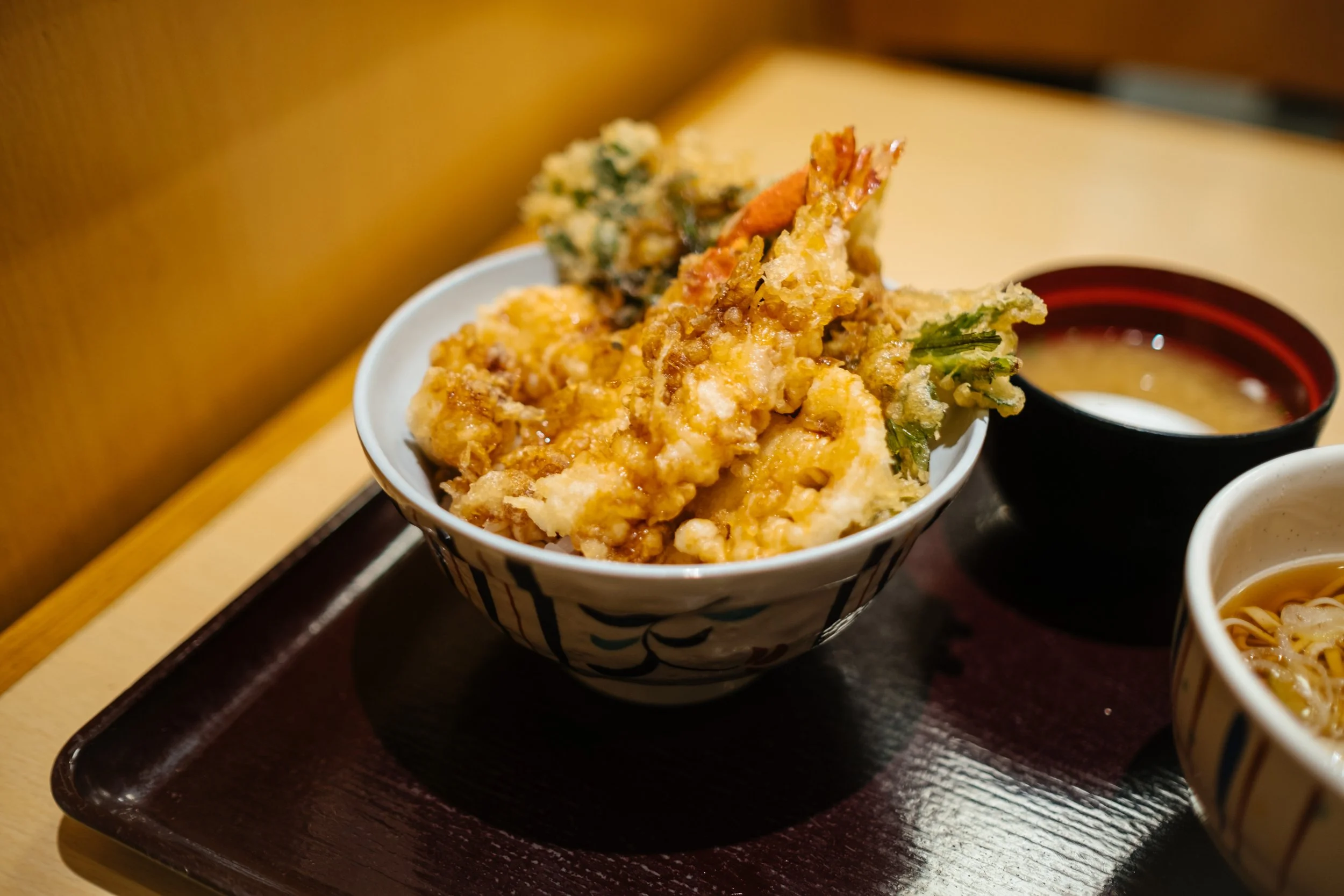In Tempura, a Portal to History
By Inês Mendonça
The origin of the word tempura is uncertain, and so is the original recipe. One possible predecessor is a chicken dish made by the Portuguese, tenpurari, in which different powdered seasonings are added together to coat the chicken before frying. Photo by bady abbas on Unsplash.
Tempura is a staple on Japanese menus, but what if I told you that tempura actually has roots in Portugal? Japan and Portugal have a long history dating back to the 16th century, when Portuguese traders became the first Europeans to make contact with Japan.The relationship didn’t really start off on the right foot. Upon arrival to Japan, traders found a community much different from their own, and the Japanese regarded Europeans as “barbarians,” so much so that Portuguese and European traders became known as nanbanjin, or southern barbarians.
Despite this, many historical texts depict an admiration for Japanese culture and society. Jorge Álvares, a sea captain, wrote in detail to Francis Xavier, a cofounder of the Jesuits, about Japan in 1547, expressing appreciation for the way people there live, how they cultivated their land and how beautiful the landscape was. That 44-paragraph description became the reason that Francis Xavier decided that Japan would be the perfect place for a Jesuit mission to spread Christianity.
Portuguese presence in Japan declined in the early Edo period, in 1603, with the rise of the Tokugawa shogunate, the military government of Japan, which feared the influence of Christianity in Japan, particularly the Roman Catholicism of the Portuguese. However, as Portuguese made their way out of Japan, their culinary exploits, which seemed to suit Japanese taste, stayed behind. It created a specific type of cuisine that influenced foods popular in 2022.
The recipes making up this new culinary world can be found in a 17th century manuscript called The Southern Barbarians Cookbook or Nanban Ryōrisho. There, you can find the earliest recipes for tempura, recipes for bread and traditional sweets made with eggs and sugar, two ingredients not common in 16th century Japan. Chickens were kept as domestic animals and only consumed for medicinal purposes, especially for women and children.
China introduced sugar to Japan. For centuries, it was thought of as medicine, so when the Portuguese arrived, it was seen as a rare commodity. During the Edo period, sugar imports from Europe grew and sugary treats became commonplace for the tea ceremonies of the aristocracy.
Back to tempura: In Eric Rath’s book Food and Fantasy in Early Modern Japan, the origin of the word tempura is uncertain, and so is the original recipe. He attempts to trace it to a chicken dish made by the Portuguese, tenpurari, in which different powdered seasonings are added together to coat the chicken before frying. The dish is finalized with gardenia water, which produces bright yellow dyes.
Another possible origin of tempura is a fish dish called uo no ryōri, which is batter fried. The recipe also appears in the Southern Barbarians Cookbook and states: “It is fine to use any fish. Cut the fish into round slices. Douse in flour and fry in oil. Afterward, sprinkle with powdered clove and grated garlic.”
Kesachina directly ties to queijada, pictured here, a Portuguese dessert made with cheese, an early version of cheesecake. Photo by Daderot, CC0, via Wikimedia Commons.
In his book, Rath also creates a direct link between foods popular in today’s Japan and their Iberian equivalents. For example, karintō, a snack made from flour, yeast and brown sugar can be directly tied to coscurão, a deep-fried dough served around Christmas. In the Nanban Ryōrisho, you can also find recipes for kesachina, which directly ties to queijada, a Portuguese dessert made with cheese, an early version of cheesecake; pan or pão (bread) and kasutera or Castella cake which is directly tied to pão-de-ló, a sweet, fluffy type of cake.
Karumeira, made with sugar and egg whites, is nothing other than caramel. A recipe for Portuguese confeito hard sweets results in a tricolored, spiced-candy mix. The resulting konpeitō candy already had some history. According to Rath, a Jesuit missionary gave a container of konpeitō to the warlord Oda Nobunaga decades before the cookbook was compiled. Becoming nearly synonymous with Christianity, sugary treats were difficult for wider society to accept, when the efforts to ban Nanban trade and Christian missionaries began in the 17th century.
In spite of the ban on Christianity and Portuguese missionaries and traders, the ways in which they influenced Japanese food became too ingrained to completely get rid of. What was once a foreign dish, is now instantly associated with Japanese cuisine. As the recipe for tempura evolved and became enmeshed with Japanese society, changing to fit its wants and needs, it stopped being foreign and became authentic. As recipes get passed down, in cookbooks or mouth to mouth, they get to evolve and become better than before. Cultures will pull from one another, fusing their best culinary players to create dishes better than those that came before them. What was once fusion, becomes a staple over time. Ingredients shift and flavors get perfected. May we all reap that reward.


